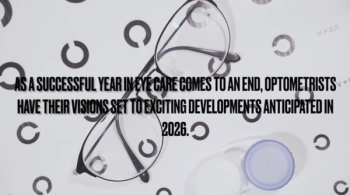
Device provides versatile platform
A user-friendly diagnostic ultrasound device offers a range of features that make it a valuable instrument for anterior and posterior ophthalmic imaging both for clinical use and for teaching applications, according to an echographer.
Tools of the trade
She noted that the tools of the ultrasound device include standardized diagnostic A-scan, a high-frequency 20 MHz B-scan probe for wide field anterior segment imaging, a 10 MHz B-scan probe for posterior segment imaging, and a biometric A-scan with customizable velocity settings for axial length biometry.
Babic said that she has been using the ultrasound instruments for more than a decade-including the latest, fourth-generation software-since the beginning of 2010.
As a result of its unique amplifier and probe design, the device has a high signal-to-noise ratio. This feature translates into high resolution and enhanced sensitivity.
"Because this unit is so successful in reducing background noise, there is limited artifact with high resolution and sensitivity," Babic said. "As a result, the image clarity is greatly enhanced, making the interpretation of structures much easier."
High-speed imaging is another feature of the device. Acquiring images at a rate of up to 25 frames per second, the device creates a real-time display that allows identification of kinetic membrane movements or of blood cells within vasculature.
"We have a busy oncology practice at the Doheny Eye Institute, and high-speed imaging with the B-scan and standardized A-scan probe is an important tool for characterizing tumors as well as for diagnosing other ocular pathologies," Babic said.
Video capabilities
The device also offers advanced video technology. Users can capture movies of each exam (maximum length 10 seconds) and store the video for review later in full-movie or frame-by-frame mode. The video capabilities help in diagnostic applications and also are highly appreciated for teaching purposes.
"Video is very helpful for training residents and fellows at our teaching institution and is welcome as an alternative to static images when preparing presentations for scientific conferences," Babic said. "The new software version for the [device] also incorporates more editing manipulation tools that enable users to create a higher-quality end product.
"The video technology is advantageous during acquisition of axial length," she added. "Video review of biometric measurements allows the echographer the ability to select accurate measurements for IOL calculation even if patient fixation is suboptimal."
As another feature, the device has a large, 24-inch wide screen LCD monitor that makes viewing easier for the echographer as well as facilitates teaching and discussions with the patient.
The software (V4) also has been updated to a Windows-based interface. In the new format, all of the applications appear on a single screen, which makes the system much more user-friendly, according to Babic.
FYI
Kelly Babic, MSc, CDOS
E-mail:
Babic has no financial interest in the subject.
Newsletter
Want more insights like this? Subscribe to Optometry Times and get clinical pearls and practice tips delivered straight to your inbox.













































.png)


